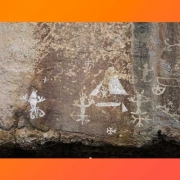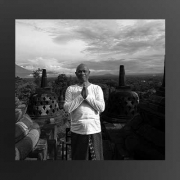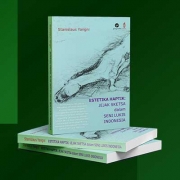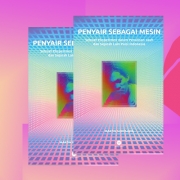Indonesia: The Nationality in Cinema
Oleh Seno Gumira Ajidarma
National Film as An Identity Project: Background
Nation-state in Asia rose as a momentum following the decolonization phenomenon after the World War II that ended with the bombing of Hiroshima and Nagasaki in the year of 1945. In the case of Indonesia, as soon as the declaration as a Republic, the country began the identity project to show that this very new nation state really deserved their independence not only because of human rights matters, but also because of the pride of their own culture. It seems that art is one of the practical and efficient way to represent “Indonesian culture” in a quite short time.
In other words, nationality was the new cultural identity after the independence, which as new as the introduction of the word, nobody was really aware that the old cultural traditions would better be seen as parts or elements in the construction of Indonesian culture, and it actually cannot be claimed as the representation of the new nation itself. In this kind of cultural situation, the people who is in-charge of diplomacy seem to be recognizing the existence of Indonesian modern art, like in painting and sculpture, and try to organize exhibitions to give the impression that Indonesia is not a stranger in the modern world.
Soekarno, the first president, who was graduated with a qualification as an engineer of constructions, even used Jakarta, the capital city, with the planological design of the city, including the statues, as a big platform to show the symbolic spectacle of the modern Indonesia. This kind of strategic ideological struggle still continued until when Sitor Situmorang, then an important literary figure, told Usmar Ismail to make a film that would represent Indonesia. Situmorang then came to Ismail with a story of the exodus of the very young Indonesian national army from Central Java back to West Java, which is an idea derived from the monumental Long March in China, where Mao Zedong lead the communist troops in 1934-1935 (Ismail, 1983: 165).
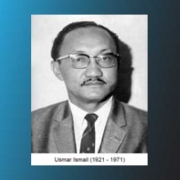
Usmar Ismail (1921 – 1971)
This film then had a double title, The Long March and Darah dan Doa or Blood and Prayer. This fact reflected the impression that the art from the cultural legacy like Javanese or Balinese dance and gamelan, besides being the dominant choice as an example of the grand narrative of Indonesia, was just not revolutionary enough as the cultural representation of this new nation-state. For Ismail, this kind of spirit made him able to make a statement, that although the film is his third production as a director, he claimed it as his first film because the two previous films were particularly made by the producer’s instead of his ideas. In short, nationalism becomes his identity.
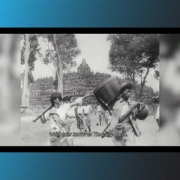
Adegan film Long March (Usmar Ismail, 1950). (sumber foto: historia.id)
Is this, with all the background, legitimate as the identity of Indonesia? As a fact, the first official screening was not in the cinema but at the presidential palace, of course with Soekarno as the First Spectator; and the first day of the shooting become the National Film Day until today. This consciously constructed national identity will be challenged by the film itself as a text. How far is The Long March could be claimed as an Indonesian film? And in the meantime, how is the national identity represented in Indonesian cinema after? This survey will try to have a look in some films: Were there a unity on the idea of Indonesia, or on the contrary are there always diversity as any representation will bring their own discourses, from the point of the film making until today.
Some Concepts on Identity: Nationality as The Self
The concepts of identity so far have already developed in the interest of a rigid definition, from (1) identity itself as a cultural construction so that at the same time also means multiple identity, (2) identity politics that is concerned with the making and maintenance of cultural rights for those persons making identity claims within society and culture, (3) identity project that refers to the ongoing creation of narratives of self-identity relating with perceptions of the past, present, and hoped-for future. From the last definition, (4) the concept of self-identity refers to the way we think of ourselves and construct unifying narratives of the self with which we emotionally identify. Self-identity can be grasped as a reflexive and discursive of self, a story we tell ourselves about our self.
With this kind of concepts, it seems possible to use Indonesian cinema as a narrative about Indonesian identity and conceives it as the suturing or stitching together of the discursive ‘outside’ with the ‘internal’ psychic processes of subjectivity. One’s identity refers to points of temporary emotional attachment to the subject positions which discursive practices construct for us. Self-identity, as for Giddens, is constituted by the ability to build up a consistent feeling of biographical continuity through identity stories that attempt to answer the critical questions like ‘what to do, how to act, who to be’.
Self-identity is an attempt to construct a coherent identity narrative by which the self forms a trajectory of development from the past to an anticipated future. Here self-identity of nationality, national cinema included, is constituted not by the possession of traits but rather as a reflexively understood biographical project—in this case the biography of a nation that would be the nation’s history from the cinema eye. An identity project builds on what we think we are now in the light of our past and presence circumstances in conjunction with what we think we would like to be, that is, the trajectory of our hoped for future (Barker, 2004: 93-6, 180-1).
Is this really the right tools to trace the signs of nationality in the cinema? Jinhee Choi make it really clear that the relation of national cinema and national identity is only contingent, so that it still needs a method to illuminate the relation, that for Choi it’s from the prototype and exemplars (Choi in Carroll & Choi, 2006: 315); but this brief survey isn’t going to go further with Choi’s concepts, because the survey will replace it with a more simpler method: just show the signs in Indonesian film that seems like representing the idea of Indonesia. The random choices will make the results free from the surveyor intention, consciously or unconsciously, whatever the intention is. But definitely will start with the first film of Usmar Ismail, The Long March, that enjoy the first screening in the presidential palace with The First Spectator himself sitting in the first row.
Indonesian Cinema: The Construction of Identity
From the testimony of Usmar Ismail himself, he had already made two films before The Long March, that is Harta Karun or Treasure (1949) and Tjitra or Image (1950), but compared to the circumstances behind the birth of his third film, he preferred to claim The Long March as his first film, “Because for the first time a film was completed technically, creatively, and economically by Indonesians; and also for the first time an Indonesian film deal with events that is national in nature.” (Ismail, op.cit., 170). In Choi’s three account on national cinema: territorial (normative aspects), functional (the film as a text), relational (the contingency) (Choi in op.cit., 310-4), Ismail’s criteria of a personal reason that at the same time become national fits the territorial account, that on the first place requires the legal-normative aspect of the film makers, but then also the thematic content of the films.
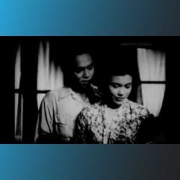
Adegan film Tjitra (Usmar Ismail, 1950). (sumber foto: umilestari.com)
Ismail confess that from the technical aspect, this film is an underachievement compared to his two previous films, but thematically, when the hero becomes an antihero, how a guerilla commander loses his role in a new society with a new situation after independence, it’s a theme that owes the credit to Italian Neorealism. While the story itself also deals with insurrection by the Islamists, as it happens, there is no way it is the same with the connotation of the same word now. The real fact is, all the characters are young people, indirectly represents the world they try to reflect, that is a young world of a new republic.
For instance, the language that is used in the film is the Indonesian language that is still in progress. It’s not the language that in reality will be heard all over the places in the film—but it is the language that is imagined and fought for by the young politicians or intellectuals as the language of the new nation. For some time, these ideals still live on in the Indonesian cinema, so that whatever the ethnic, class, on any surroundings, seems like speaking the fine Indonesian language that will be heard from any teachers in any classroom all over the country.
Twenty year after, when the New Order came to power after the bloodshed in 1965, the function of language, especially to keep the regime in power, is more biased than before. So, in the New Order all the film-makers try hard to make Indonesian language in the film dialogues as realistic as it could be, but only a view survive the monotony of the fine language. These survivors are the filmmakers that could use the language in a more sophisticated way, but can never step outside the corridor of censorship institution that already has a strict regulation as well.
The rest seems to surrender to the dominant power that gives an impact of a dry, empty, and flat language in Indonesian films. It seems like the ideals of a unified system of an identity; but what really happen is a lack of creativity as a result of a long time repression on any sector, where uniformity is one of the most important thing. The same way happened on the visual language.
Another sign from The Long March is the appearance of a Caucasian woman, as the consequences of a long relationship between Indonesia and the Dutch; but in the film, this Caucasian woman, whatever the reason of the function, represent the still exotic looks like of things from the past for the public, as a star. Even the other cast, the main female cast, is not from Java, but Kalimantan, at the time still a remote area, like it’s so important to show the-self with something else, as a sign of the lack of confidence, that also could come from the long make believe in a relation without mutual appreciation for each other before.
If we include music, in this survey on identity of national cinema, there is a fact that every time the group of fighters sings, the songs is typically the folksongs used for the interest of independence movement. The main music theme for The Long March is in fact the genre of jazz, created by an Indonesian with a fine tune, that as a music score succeed in make the film solid. Up to this point, it seems that the visual factor doesn’t give any case to discuss, to make it clear, all the shots in the film only fit for the needs of a Classical Hollywood plot. Of course, in reality so many shots still have to be taken after the shooting days finished, which shows how the concept of Classical Hollywood faithfully followed.
From this brief survey only, on the thematic, language, music, and the general visual factor, it’s proven that the feeling of unity could be constituted not by matters that are already settled on one perspective, but sometime contradictive instead. This is just one fact to prove the concept that identities are contradictory and cross-cut or dislocate each other. No single identity acts as an overarching, organizing identity, but rather, identities shift according to how subjects are addressed or represented. Thus identity is constituted by fractured multiple identities (Barker, op,cit., 94), although the strategy of identity politics will tell just the opposite.
So, in the history of Indonesian cinema, the search for a national identity is going to be more difficult, because there are always another way to claim a representation as the national identity. In the New Order era, which ended after 1998, the dominant way leaves little room for another expression. However, it is still very interesting to uncover the alternative way of telling on what is the meaning of being an Indonesian, like the film from Teguh Karya, Ibunda or Mother (1986).
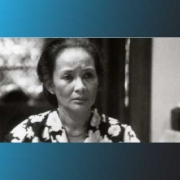
Aktris Tuti Indra Malaon dalam film Ibunda (Teguh Karya, 1986). (sumber foto: komposiana.com)
The plot centered on an Indonesian family from an Arab descent. Each member of the family has a relationship with other ethnic group. This creates something like a miniature of Indonesian ethnical networks. In the many problems that occur from the situation, the mother character once has a saying that, it’s not right if they still use the terms “crossbreed” (blasteran) for their own family as if that human being is just the same as dog. With these kind of theme, Teguh Karya had his own way to represent Indonesian identity as the sites of the struggle of meaning, with a narrative that could be compared to the Classics Hollywood: order-disorder-order restored. In reality, off course the struggle for power only put Indonesia in a process like a plot from disorder to disorder, fortunately in a positive-creative way, that in the adventure of Indonesian cinema represented in the many variations of the way to depict Indonesia gives the history a carnival on the move.
In Ibunda, on the surface, it’s like a family matter, but the connotation is the cultural-political situation in the New Order era that silenced every other alternative voice, so that only the version from the dominant group in power of the good cultural-political life will be heard. In this situation, we could recognize how soft is the discourse of resistance in Ibunda, while at the same time how hard the struggle of meaning is. As a matter of fact, this only appears as a consideration after the 1998’s reformation, that besides the years of chaos that follows, the representation of national identity in Indonesian cinema is never as variable as these before.
If Teguh Karya, a Chinese-Indonesian descend, talks about himself with the self-identification to an Arab-Indonesian family (while keeping in mind that the most repressed ethnic group is Chinese-Indonesian), after 1998, an Indonesian woman director, Nia DiNata, released her first film, Ca-Bau-Kan (2001), to make clear that a real ethnic do exist and alive, some even in the real historical-location. Although the central theme is the love story of a ca-bau-kan (native woman living together with Chinese man), at the same time this is like a statement that the Chinese descendants in Indonesia have their historical roots, so that their existence should be considered legitimate.
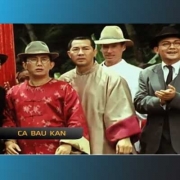
Adegan film Ca-Bau-Kan (Nia Dinata, 2001). (sumber foto: liputan6.com)
Maybe it’s not a coincidence if the variation of the topics of identities in Indonesian cinema is like a topographical reflection of the cultural-political situation. In short, even in the New Order era, important films are noted for the resistance to the dominant group. In 1974, for instance, Atheist by the director Sjuman Djaya, that is actually a story of the changing of age in Indonesian cultural scenery under the Japanese occupation, could be seen as a challenge for the Islam domination as an ‘official’ religion of the regime in power.
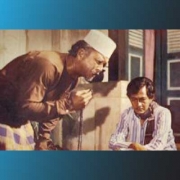
Adegan dalam film Atheis (Sjuman Djaya, 1974). (sumber foto: indonesianfimcenter.com)
Doea Tanda Mata or Two Souvenirs in 1984, by Teguh Karya again, shows the split and twist of the identical souvenirs that symbolically represent the nationalist heart in the 1930s. In Indonesian history, the year 1928 marked the Soempah Pemoeda (Youths Vow) that their nation, country, and language is the one and only Indonesia. The main character then dies as a consequence of his clandestine activities, he could never decide which one of the two women in his life is more important than the other. The single unified identity is not an easy thing to constitute.
History is one of the main source for Indonesian cinema to build a sense of national identity. Sang Pencerah or The Enlighter (2010), Soekarno (2013), and Kartini (2017), all three directed by Hanung Bramantyo, were like traces found in pursuit of the identity of a nation: the modern Islam in Sang Pencerah, the nationalist in Soekarno, the feminist in Kartini. Separately, thematically, the three films seem already unified to construct the national identity, but to read each film as a text, each of it was in fact constitutes of contradictory signs.
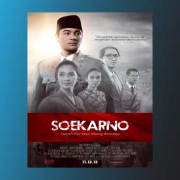
Poster film Soekarno (Hanung Bramantyo, 2012). (sumber foto: istimewa)
Take for instance Kartini, especially from the language that is used: while this is a film with the ambition to be monumental, it builds on tricks that is only understandable for any other entertainment films, but it’s merely strange for an image as a bet for the identity of Indonesia. It really looks like the director had the difficulties to choose, or had to compromise with the actual market, but whatever the situation is, the spoken language in this film is a fractured language, not because that is what happen in reality, but compromises, if not with the market, with the ability of the players to speak Dutch, Javanese, or maybe Indonesia as well.
Still with Hanung, Ayat-ayat Cinta or Love Verses (2008) and Perempuan Berkalung Sorban or The Woman with the Scarf(2009), the romance films disguises as pop-religious, uncover the new kind of audience that make the two films became box offices. So these films represent the new young Muslims of Indonesia in the big cities that want to represent themselves through these two films. It’s just like a claim that to be religious in an Islamic way doesn’t have to be so dry and provincial but fashionable instead. The wider perspective come with the romantic comedy 3 Hati 2 Dunia 1 Cinta or 3 Hearts 2 Worlds 1 Love (2010) from Benni Setiawan, where the lovers have different faith and not one of them have to win or compromised. In all, it’s another kind of ideological struggle in Indonesian cinema to claim the national identity.

Adegan film Ayat-Ayat Cinta (Hanung Bramantyo, 2008). (sumber foto: istimewa)
With these random choosing only, the many kind of variation in films with Classical Hollywood construction that consciously or unconsciously offer to constitute, the national identity were traceable. Added with film like Garuda di Dadaku (2009), the idea to use film as a way to construct the nationality in a single unified identity is only too clear, just to show that the thought of a national identity in Indonesian cinema is always an issue.
National Identity: The Non-Conventional Way
In Choi’s concepts, we could find the term supra-category, as the pair of sub-category, as one of the two ways to define the identity of national cinema. In the function of national cinema as a sub-category, it provides a fine-grained way to assess a sub-genera of a filmic category. There are three ways to think of a national cinema as a sub-category: (1) as adjectival form, as it differentiates itself from Hollywood and other national cinemas within a genre (Italian Western, Hong Kong Gangster-Noir, Japanese Anime); (2) as a corpus directed by a group of film-makers who share an aesthetic framework and/or ideology at specific historical moments (French Impressionism, Soviet Montage, German Expressionism, Italian Neorealism); (3) as associated with a “new wave”, refers to the elevated status of films produced within a nation-state, due to the changes within the film industry and film culture, which are often propelled by a generational shift (French New Wave, Japanese New Wave, Hong Kong New, Fifth Generation directors in China, New Iranian Cinema) (Choi in Carroll & Choi, op.cit., 314-5).
Knowing the definitions, it seems that there are not many phenomenons in the Indonesian film history to be matched to one of the sub-categories, but this surveyor think that it is the case to the supra-category. When a national cinema is viewed as a supra-category, it does not only include films that are aimed for a domestic audience but also films that are more internationally circulated. In such a case, national cinema is often associated with a handful of auteurs or their oeuvres (Ingmar Bergman, Satyajit Ray). Despite the pitfall of attributing the originality and creativity of the styles of these directors to something culturally specific, that is attempting to locate the origins of their styles in traditional art forms unique to their respective cultures. Films directed by auteurs do elicit in the viewer some conception of national cinema (Ibid., h. 314).
If as a text, Indonesian cinema can’t be counted as a national cinema in the functional account, because of the loyalty to Classical Hollywood narrative, then the relational account that acknowledge the contingent relation of identity between a director’s style with the national identity, can help the supra-category to be legitimate as representation of a national cinema, that at the far end can be claimed as national identity. In Indonesian cinema this opportunity was given by Garin Nugroho’s films, that from time to time try to reveal the culture of Indonesia as an identity in process, and that happens to be a multiple identity.
Take for instance Surat untuk Bidadari (1994) or Letter to An Angel, that although is set in the traditional culture in Sumba Island in the east part of Indonesia, it is never too late to show the urban-global culture that already shape the country. In this kind of film, the burying ritual of an elderly flows, actually a documentary on the spot, side by side with scenes from a lonely Elvis Presley’s fan, on an abandoned airplane that gives the film a taste of a culturally-surrealistic situation. As this could only happen in Garin’s film, as a representation of Indonesia cinema, seems fair enough to be claimed as national cinema with an Indonesian identity.

Salah satu adegan film Surat untuk Bidadari (Garin Nugroho, 1994). (sumber foto:Yogya Netpac Asian Film Festival)
Other Garin’s films then will help Indonesian cinema find the identity, like Aku Ingin Menciummu Sekali Saja (2002) or I Want to Kiss You Just for Once, that use Papua, the land of controversy, as a background, including the church; Opera Jawa (2006) or Javanese Opera, that offer a new interpretation of Sita from the Ramayana story in Javanese song and dance, including the dialog, so that it is more like a Javanese film than an Indonesian film. However, as the Javanese culture in the film appear with a strong and authentic signature, the fact that Javanese culture represents national identity give the problem of a fractured identity back again as the problem of national cinema; Soegija (2012), the story of a Javanese priest before the independent era, once again show the challenge to the discourse of the dominant group that nearly occupied the history itself.

Adegan film Opera Jawa (Garin Nugroho, 2006). (sumber foto: wikipedia)
To this point, it could be said that instead of creating a new identity, to put traditional fractures that happen because of the revolution back to life in the new world seems like a worthy options to struggle for.
National Identity as a Construction in Indonesian Cinema
The supra-category films created by individuals at the end become their filmography, but it’s not the intention of this survey to construct the national identity by some biographical films alone. From this very brief survey, at least there are three ways of struggle to construct a national identity.
The first one is nationality as an object: in these films the awareness of nationality is high, and the pretention to construct a national identity mentioned openly as the films like Sang Pencerah, Soekarno, or Kartini, and also Soegija; the second one is nationality as a subject, where the awareness of nationality is also high, but it sees nationality not as a kind of a new culture, but a continuation of a long process that begin with a consciousness of self-identity, whatever the identity is, like what happened in Surat untuk Bidadari, Aku Ingin Menciummu Sekali Saja, and Opera Jawa; the third one is films without any intention to construct a national identity, but as a fact used by the dominant audience as their self-identification in their search of an identity.
An account of a national identity then will have to include all three ways of the struggle to create and construct an identity in the national cinema. Then it will also be clear how each film contributes to the identity they think they have, and enrich the whole national identity without having to be unified as a single unity. This pluralistic identity today, when compared to the ideals of the self-identity struggled for in the making of The Long March, only prove that although identity politics will always exist, there are always an interest in the search of national identity, in which the identity itself will always be a multiple identity.
– Makalah ini pernah disajikan di CILECT Conference 2017. CAPA Conference – Storytelling in the Asia Pacific – Ngee Ann Polytechnic, Singapore (30 Nov – 1 Dec 2017)
*Penulis adalah Sastrawan, Pengajar di Pasca Sarjana Fakultas Ilmu Budaya UI, Pasca Sarjana ISI Surakarta, Pasca Sarjana IKJ serta Fakultas Film dan Televisi IKJ.




